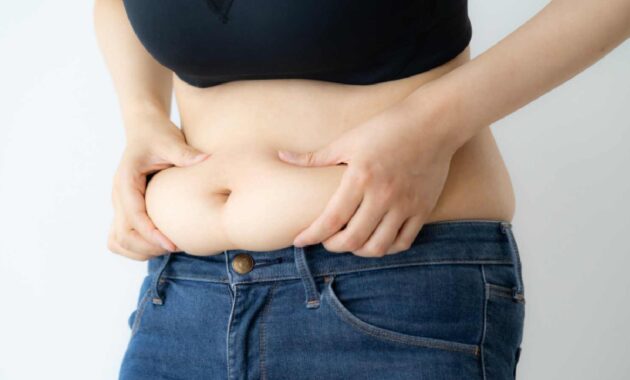Body fat is not always just about obesity. It can harm your body in more than one way. When we go on a weight-loss journey, it’s the belly area that we are mostly concerned about. Yes, you do want fat from thighs and arms to disappear too. But visceral or deep abdominal fat is something that you should try your best to get rid of. That’s because the dangers of visceral fat are many. Read on to find out about visceral fat and its harmful effects on your body.
To know about visceral fat, Health Shots reached out to Dr Manisegaran, Consultant Surgical Gastroenterologist – Minimal Access Surgery, Bariatric, Metabolic and Robotic Surgery, Yashoda Hospitals Hyderabad and Dr Hemanth Kumar Kasaragod, Director- Bariatric Surgery at Fortis Hospital, Vasant Kunj.

What is visceral fat?
Visceral or deep abdominal fat refers to the fat that gets accumulated inside the abdomen over the organs and adjacent to it, says Dr Kasaragod. It is basically around important organs such as liver, pancreas, kidney and intestines. The tricky part is that visceral fat is not visible or seen or felt. You may have a pretty flat tummy, but still have visceral fat. That’s the reason why some even refer to it as “thin outside fat inside”. The visceral fat is hidden and is not easily detected.
They generally require expensive imaging scans like computerised tomography or magnetic resonance imaging, says Dr Manisegaran. But there are also simple means to know if you are accumulating excess visceral fat. Here are some ways to find out!
1. Waist size
When you measure at belly button and see your waist size more than 31.5 inches, it should be alarming for women. For men, the cut-off is 35.5 inches.
2. Body mass index (BMI)
If your BMI is greater than 23 kg per meter square, it you could mean you are accumulating excess visceral fat.
3. Body shape
Having an apple-shaped body, with a big trunk and slim legs, hints you have more visceral fat.
Select Topics of your interest and let us customize your feed.
PERSONALISE NOW
Dangers of visceral fat
The normal visceral fat range is about 10 percent of your body fat, but more than that means it’s time to lose it.

Here are some reasons why visceral fat is dangerous:
1. Visceral fat increases risk of diabetes
Visceral fat can lead to diabetes because of the excessive amount of glycerol produced, causing abnormal function in liver which regulates glucose, says Dr Kasaragod.
2. Coronary artery disease
A 2010 research published by National Library of Medicine showed that visceral fat is considered an independent endocrine organ which actively produces biologically active molecules. This in turn leads to increase in chances of coronary artery disease. Computer topography can detect the link between visceral fat and coronary artery disease easily.
3. Obesity
Visceral fat adds to the component of total body fat leading to increased BMI count, resulting in obesity.
4. Hypertension
Visceral fat is a type of fat that increases the risk of hypertension because of its unique ability to press nerve around abdomen, says Dr Kasaragod.
5. Bad cholesterol
According to Harvard Health Publishing, excess visceral fat is considered to be harmful because of its location near the portal vein. It is responsible for carrying blood from the intestinal area to the liver. Visceral fat releases substances, including free fatty acids. They enter the portal vein and go to the liver, where they can influence the blood lipids’ production. So, visceral fat is linked with higher bad cholesterol and lower good cholesterol.
Tips to get rid of visceral fat
A surgery is one of the treatments for morbidly obese patients. But there are other ways also to lose visceral fat.
1. Exercise
Exercise will help to shed visceral fat. Aim for at least 30 minutes of rigorous aerobic exercise every day, suggests Dr Manisegaran.
2. Eat smart
Calcium and vitamin D can help to reduce visceral fat. Go for early morning walks during sunrise. If you have calcium and vitamin D deficiencies, correct them with supplements. Eat leafy green vegetables, spinach and dairy foods like yogurt, cheese and milk. Avoid foods that increase visceral fat, so no deep fried, processed foods, sodas or candies.
3. Sleep well
People who don’t get enough sleep may have a chance of getting additional visceral fat. So, sleep for at least seven hours every night.
#Visceral #fat #side #effects #rid
